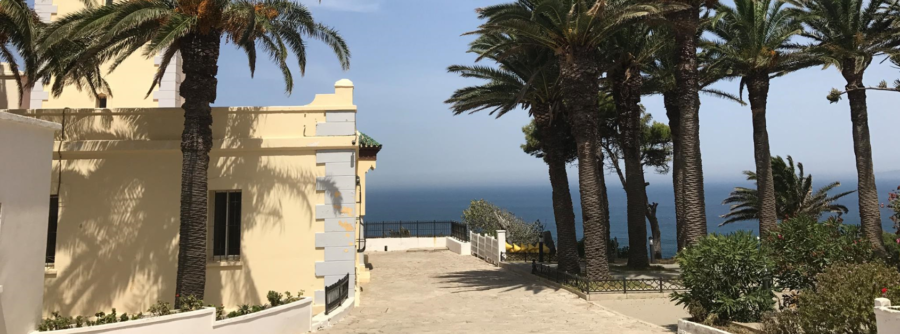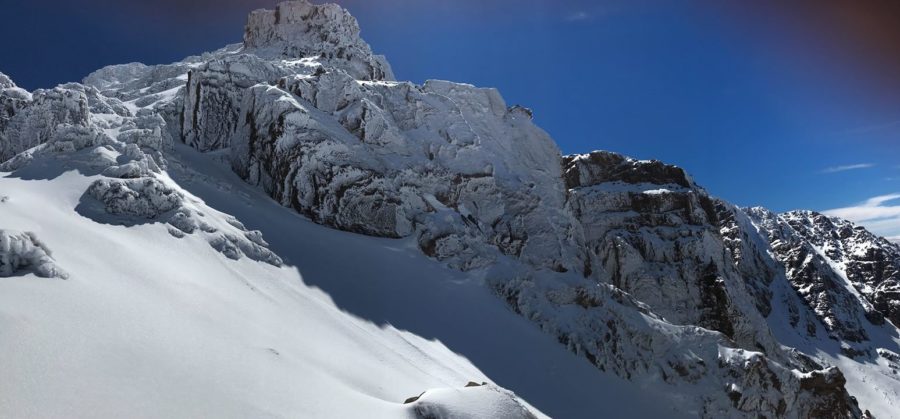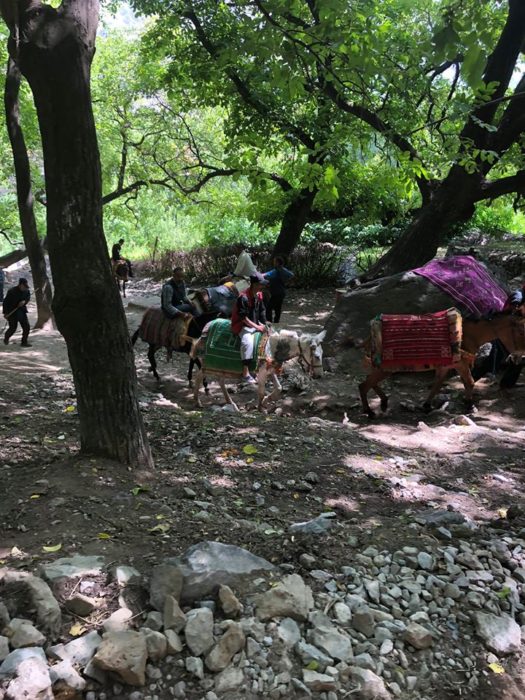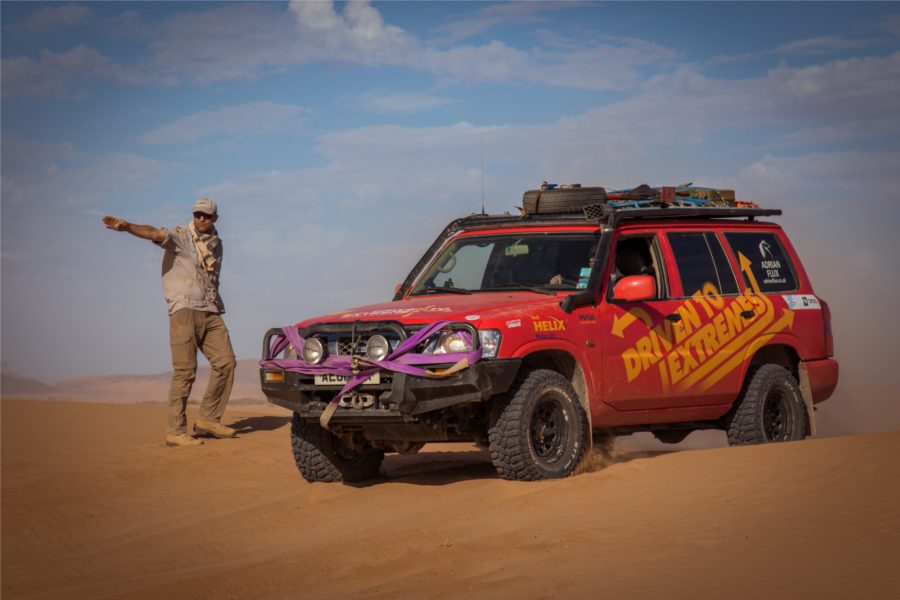16th August 2018 Morocco, Rabat
A Year in Morocco

09 August 2018 – A year ago today, my family and I drove into Tarifa to take the ferry across the Straits and begin our adventure in Morocco. As we looked across at the glowering Rif Mountains, we all felt both excited and apprehensive. Although I had been to Morocco three times before, I had never worked here: from previous postings, I was aware that the experience of a tourist is quite different to that of a ‘resident’. I had never been an Ambassador before and I had never moved to a new country with two children and two dogs, with schools and a Residence to manage and worry about.
We had driven over 5,000 kms from the UK to Tangier without incident, but had only been in Morocco for 20 minutes before we had a gentle greeting from a lorry which bumped into the back of our car as we left Tangier heading for Rabat.
In retrospect, that was an appropriate introduction to Moroccan roads. The driving in Morocco is fast and furious; often scary. Never dull. You need to keep your wits about you at all times. Cars drive just behind you at 130 Km/H flashing their lights to ask you to pull over; cars overtake on all sides; pedestrians can saunter across the motorway at any point; and in the towns and villages it is a glorious mayhem of donkeys, trucks, mopeds, carts, people, cars, dogs, cats and lorries. You cannot afford to lose concentration for a second.
After our tangle with the lorry and our first meeting with the incredibly charming and helpful Gendarmerie Royale, we drove out of Tangier along the road to Rabat. That was our first time journey along it and as we drove, I was amazed by its geographical variety – as we left the hills of the Rif behind, the amazing Atlantic coast opened up.
That road presages the extraordinary variety of Morocco’s scenery. I have climbed Mount Toubkal and looked across, from that snowy, frozen height to the beautiful Atlas range; down into the infinite desert; and back towards the fecund plains around Marrakesh. My wife has ridden in an international competition with the Moroccan national endurance team out into the desert around Merzouga and come back with stories of an inhospitable and impossibly beautiful region– rolling sand-dunes, sudden oases, camels emerging from dust storms. We have been on holiday to Essaouira and had our legs blasted by the racing sand as we walked along the most extraordinary beaches I have seen anywhere outside of New Zealand. We have visited Ouarzazate and admired the films made there (including Gladiator, one of my all-time favourites). We have driven up the spectacular Dades Gorge and along the Vallee des Roses. We have visited Fes, Volubilis, Meknes, Tangier, Tetouan, Chefchaouen, Marrakesh and Casablanca – place nameswhich conjure up a myriad of magical, mythical images. We have got lost in the Rif and surfed in the Atlantic. We have been entranced by the silence at Kasbah Toubkal and thoroughly immersed in the madness of Jama’a el-Fnaa.

As we drove towards Rabat on that first day, along the flat, agricultural lands between Larache and Kenitra, we saw the new train line and the rural life that goes alongside it. We saw donkeys and horses working in the fields and high ricks of straw and hay. We saw people working hard in their fields under the blazing sun of an African summer.
I had not realised how deeply rooted the ‘horse culture’ is in Morocco. As we have driven around the country, the equine importance to rural life is clear. From the short ride from Imlil up to the Kasbah Toubkal; to the road which I nicknamed the ‘Donkey Highway’, leading from Essaouira towards Marrakesh or the Vallee des Roses, the omni-presence of the faithful donkey and mule underlines their centrality to daily life.

When we climbed Toubkal, the mules carried our bags until the balling snow made it too difficult to continue. In the villages around Larache and Asilah and in the Gorge de Dades, transport of people and goods is by donkey for many families. In the hills of the High Atlas, the valleys’ paths are too steep for anything but the sure-footed donkey and mule. The caleches in Essaouira and Marrakesh are not just for tourists and for show, but have a great and noble history. The amazing Tbourida relies on the most extraordinarily brave Arab-Barbe horses. And I have been privileged to play polo here on some of the best polo ponies I have ever ridden.
When we finally arrived at the Residence in Rabat, full of wonder and excitement, we were met by smiling guards. The policemen waved in greeting. People at the houses next door put their thumbs up and grinned their welcomes.
Earlier this year, a group of British army veterans who all suffered from PTSD due to trauma suffered or witnessed on the battlefields of Iraq or Afghanistan visited Morocco. They came in the most beat-up cars you can imagine – Citroen Berlingos, whose only qualification was that they did not cost more than £200 each. They came to drive across Morocco’s deserts and use the experience to start the process of mental healing. They came to the Residence after their month-long rally. They described the beauty of the desert; the silence of the nights; the challenges of driving their cars across difficult terrains; their sense of triumph at having come through it stronger, healed, their road to recovery now clear before them. But the thing that had really struck them was the generous hospitality of the Moroccans they met on their way – that same sense of greeting, of welcome, of openness. Of how, whenever they had encountered a problem, there had always been someone there – often from the poorest communities – to offer them help, a bed for the night, food or water.

I have loved my first year here – and, more importantly, I think my family has too. The work has been great – sometimes difficult, more often rewarding. I have been so fortunate in my travels round the country – Morocco has an almost bewildering variety of history and geography. Meeting and working with new people from across the political and social spectrum has been a huge pleasure.
Of course, there are also challenges: Morocco is not perfect – what country is? If I could change two things, they would be the driving and the litter. Morocco led the world in banning plastic bags and should be congratulated for that leadership, but the plastic scourge legacy (from which many countries are suffering) is more noticeable in Morocco, since it makes such a stark contrast to the outstanding natural and historical beauty of the country.
I am looking forward to my second year; to continuing to build a real partnership of equals between our two countries; to sharing my experiences; and to visiting more places and learning more about this remarkable country.
I’ve lived in Morocco for 7 years and then came home, I hope you can go back with your family
Nice blog. I like your description of the several parts of Morocco
Nice blog post! I’ve lived in Morocco for 9 months and I made really good friends in it. I really miss the tea and the msemmen! hahah 🙂
Thank you for this very descriptive post it makes me want to discover and experience my own country the way you did…I am so jealous 🙂
Dear Thomas
What a nice blog.
Our good friend Fiona Clouder has just come back from Chile and my niece Clare Halperin is also a foreign office member,.
It’s so refreshing to have new enthusiastic younger representatives who can relate to the countries they work in on all our behalf.
Good luck and congratulations in the new position
Dr Anthony Halperin
Amazing ,just came back from a 2weeks around Marrakech with my little family…probably the best place we ever been to,the place ,the food,the culture and the wonderful people we surly go back again .
Fantastic blog, really enjoyed reading it, hope the next year is as amazing.
I’m a Moroccan national born in tangier, Scotland it my home for the last 45 years. Nice to read some thing like that make me feel good, I hope you will go back and have another wonderful year you and your family. Mokhtar.